
x
Contents
Home
Home
Home
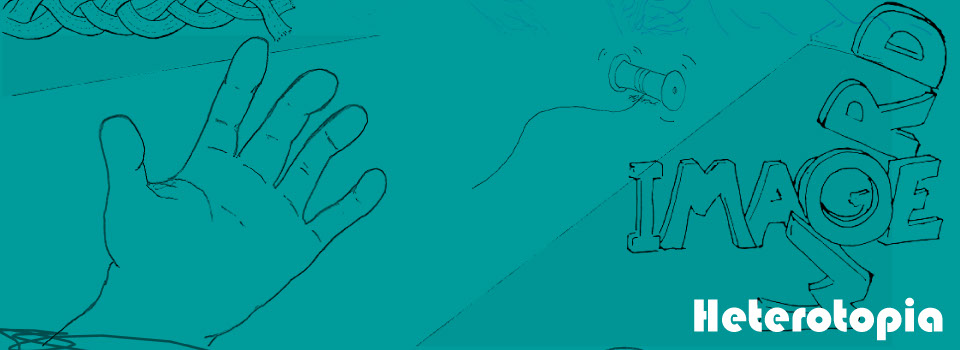
Image|Text
The juxtaposition of image and text occupies the most obvious of these binaries we will consider and the one with which we will begin our decentering. Becoming frustrated with the sequential definition’s exclusion of single-panel comics like The Far Side or The Family Circus, many have pointed toward a different (though still formalist) center: image and text. Robert C. Harvey’s definition does just this. In fact, for much of the last twenty years, Harvey and McCloud have been seen as the two major figures in this debate about the formalist definition of comics. I have examined these arguments more closely in a different project. But for now, we will move further into this division, if only to see how it too fails to adequately describe comics.
The traditional comics definition presents comics as sequential art. McCloud perhaps did the field a disservice with his focus on this definition. His definition allows for theorizing the gutter, the space between two comic frames in which the real substance of comics happens (or so McCloud argues), a site that has since been extensively archaeologized. But the same (or at least a similar) gutter occurs between the image and its caption in single-panel comics (and between the various elements of this project). As we shall see, the gutter is very much the center of comics: it is everywhere and nowhere at once. We’ll begin by defining image as mimetic and text as semantic and see what trouble that gets us into.
In the average Far Side comic the difference between image and text is fairly clear and so provides a handy example for our analysis.
Here the caption depicts a character’s speech. The speaker is clearly delineated from the four other characters in the image by his open mouth. Nor is it unremarkable that Gary Larson is obsessed with anthropologists. I like to imagine the disembarking anthropologist as Claude Levi-Strauss. He steps off the boat looking for a definition of culture, something that clearly separates physis and nomos. However, everywhere he goes he finds the incest prohibition, a universal interdiction, a natural law. Would that he could arrive before he got there and see the savages with a culture not unlike our own. What do they watch on their TV? What do they read with their lamps? Perhaps their favorite show is Survivor: Paris, in which twelve Bororo are transplanted to the sixteenth arrondissement and forced to eat foie gras, escargot, and other local delicacies through clenched teeth, while performing feats of street painting wearing aboriginal berets. Who knows what one looks like through the eyes of the Other. Larson’s humor often revolves around the types of deconstruction that are termed negative in our imagined conversation.
Things become more complex with the introduction of word balloons, as in our next example.
Here the difference between image and text becomes a little more slippery. Now the image actually contains text. The image must “translate” the text into a visual form: speech balloons and handwriting. The task is as impossible—and as unwanted—as a canine decoder. How could a dog’s life be translated into English and would we really want to know what dogs say? Traduttore, traditore. Translating the image into text is equally impossible and unwanted; like explaining a joke, it removes the humor, the substance. Similarly, a purely negative deconstruction merely reveals the possible without actually entering into possibilities. Negative deconstruction clears the ground, an important act, which takes us from grund to abgrund, from ground to abyss. Affirmative deconstruction erects possibilities, impossibilities, and compossibilities upon this abgrund. These are the twin moves that Deleuze enacts: destroy unity to substantivize the multiple.
Things can, of course, get infinitely more complex with repeated acts of translation. In the next comic, the caption occupies the position of text, but within the image we then have two more levels (at least) of representative translation. Thought balloons typically represent—in a semantic, textual manner—the ideas contained within a character’s thoughts. However, within this thought balloon we find not text but another image. In the semantic thought balloon we find a mimetic reproduction of a textual object, the classified page from a newspaper from the future. The newspaper communicates semantically, but the typeface of the classified ads has been replaced by Larson’s handwriting, which, I might add, doesn't look much like his signature in the lower right.
When I first read this comic, I thought of myself as the child. Now that we have passed the newspaper’s futuristic date, I wonder that there are jobs for former video-game-playing experts. Was my own youth squandered reading comics and playing video games or did they prepare me to teach multimodal composition? The lineage is unclear, but present. Similarly, the divisions between image and text in the comic are unclear but present. Fantastic, to use Todorov's term.
The Far Side comics provide my readers with a certain familiarity in that they are read widely and conform to a common view of comics: they should be funny and found in a newspaper. However, they disobey the sequential definition's insistence upon multiple panels. They also seem at first to fit nicely into the schema of image|text. As we’ve seen, they do anything but. In the next section we will rotate the binary to Visual|Verbal and try reading Derrida as a comic.*
Translation is betrayal.
Various cartoons from Gary Larson; The Complete Far Side; Kansas City, Mo: Andrews McMeel Pub, 2003; Print.

*As God intended!
The thing that comics do that no other graphic art does is to weave word and picture together to achieve a narrative purpose. Comics are a blend of word and picture—not a simple coupling of the verbal and the visual, but a blend, a true mixture. From the nature of the medium, then, we can draw up one criterion for critical evaluation: in the usual situation, in which both words and pictures are used, a measure of a comic strip's excellence is the extent to which the sense of the words is dependent on the pictures and vice versa.
(Harvey, The Art of the Funnies 9)
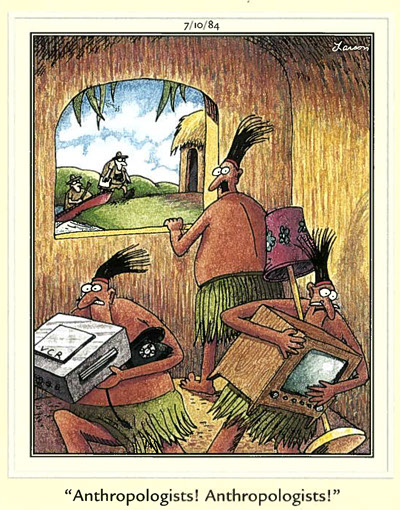
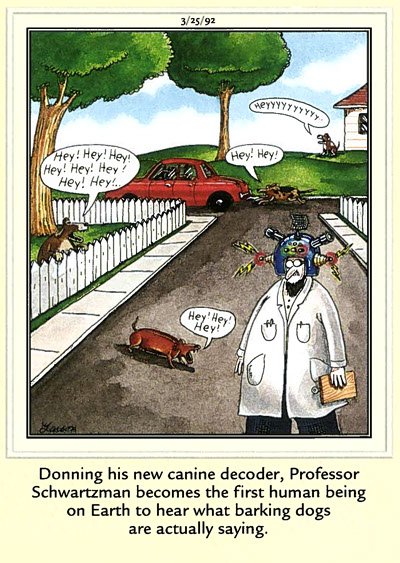
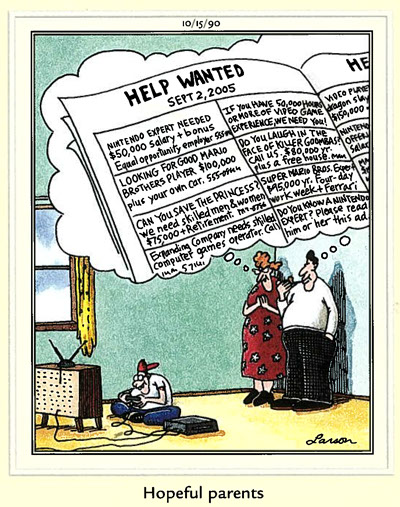
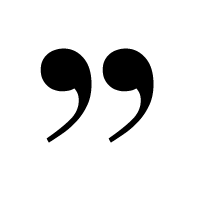
❰ Heterotopia
Visual|Verbal ❱
From here you can continue the linear path by clicking the link to the left or take a brief aside to explore Thierry Groensteen's System. Make sure to read the optional Family Circuses throughout this nexus (see below).
Nietzsche Family Circus
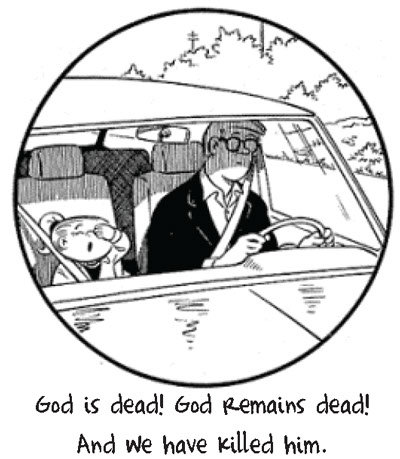
There is always a supplement. Here it is Bil Keane’s The Family Circus, the comic that asserts itself as a deconstruction of sequentiality. Why focus on Larson instead of Keane? The answer is fairly simple. I’ve always hated The Family Circus.
I am able to both ignore and address this saccharin comic through an interesting meme that circled the interwebs a few years ago. The Nietzsche Family Circus pairs a random quote from Nietzsche with a random image from The Family Circus, often with gratifying results.

